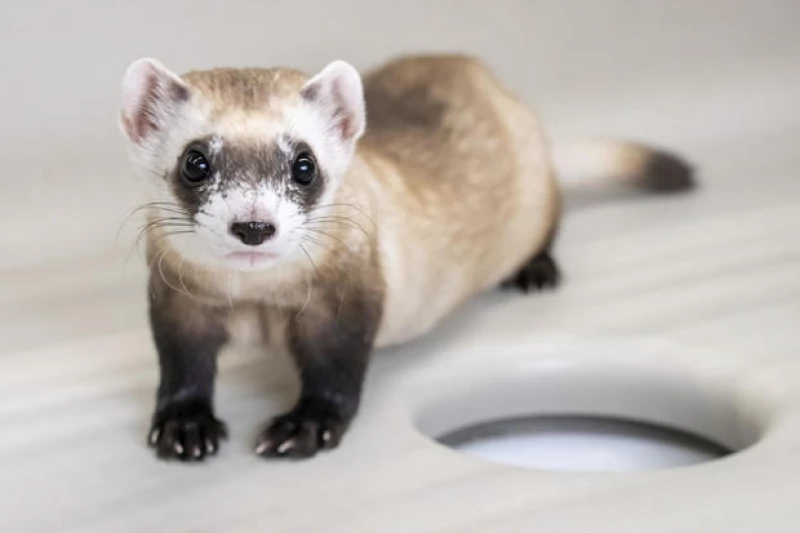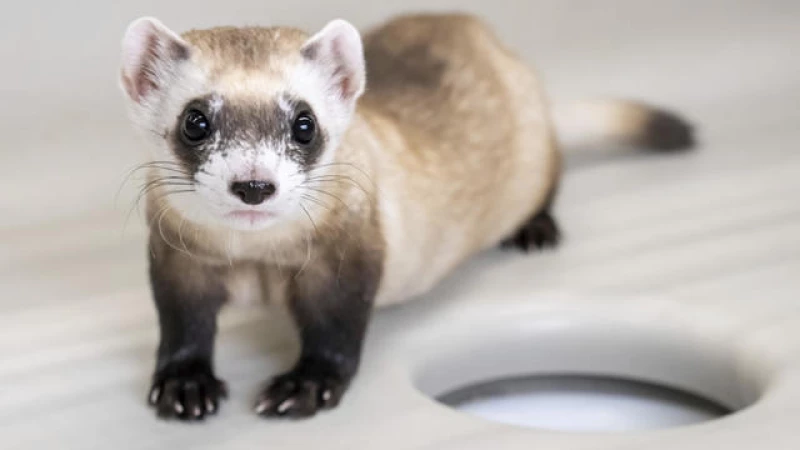Breaking News: Two additional black-footed ferrets have been successfully cloned using the same genes as the first clone of an endangered species in the U.S. This brings the total number of identical slinky predators to three, all originating from one of the last remaining animals found in the wild. The U.S. Fish and Wildlife Service made the exciting announcement on Wednesday.
While attempts to breed the initial clone, a female named Elizabeth Ann who was born in 2021, were unsuccessful, the recent birth of two more cloned females, named Noreen and Antonia, alongside a captive breeding initiative initiated in the 1980s, are providing optimism for diversifying the endangered species. Enhancing genetic diversity can enhance a species' resilience to disease outbreaks and changing environmental circumstances, increasing their chances of survival.

"Increased diversity is always beneficial. It helps prepare the species for various changes, including those related to climate," stated Dr. Della Garelle, a FWS veterinarian who specializes in working with ferrets, during an interview with CBS "Sunday Mornings" in 2023.
Known for their energetic and inquisitive nature, black-footed ferrets are a species of nocturnal weasel characterized by dark eye markings resembling a mask. They primarily prey on prairie dogs, hunting them within extensive burrow systems on the plains.
Black-footed ferrets are now a conservation success story - after being all but wiped out in the wild, thousands of them have been bred in captivity and reintroduced at dozens of sites in the western U.S., Canada and Mexico since the 1990s.
Because they feed exclusively on prairie dogs, they have been victims of farmer and rancher efforts to poison and shoot the land-churning rodents - so much so that they were thought to be extinct until a ranch dog named Shep brought a dead one home in western Wyoming in 1981. Conservationists then managed to capture seven more and establish a breeding program.
But their gene pool is small - all known black-footed ferrets today are descendants of those seven animals - so diversifying the species is critically important.
Noreen and Antonia, like Elizabeth Ann, are genetically identical to Willa, one of the original seven. Willa's remains -- frozen back in the 1980s and kept at the San Diego Zoo Wildlife Alliance's Frozen Zoo -- could help conservation efforts because her genes contain roughly three times more unique variations than are currently found among black-footed ferrets, according to the Fish and Wildlife Service.
There are more than 10,000 samples at the Frozen Zoo, everything from skin to feathers, CBS News' last year.
"When I was freezing cells from the northern white rhino, there were 50 living. And then now, there's two left," Curator Marlys Houck told Vigliotti.
Barbara Durrant, the director of reproductive sciences at the Frozen Zoo, emphasized the importance of their cell bank in preserving endangered species. She stated that their collection of cells could potentially save up to one million species facing extinction, largely due to human activities.
In certain situations, the only way to restore a species' dwindling population is through scientific intervention. Durrant explained, "If we were to vanish, many things would naturally recover. However, some populations are so fragile or only exist in this specific location that they would be unable to rebound without our assistance."
Elizabeth Ann currently resides at the National Black-footed Ferret Conservation Center in Fort Collins, Colorado. Despite being a cloned individual, she has encountered challenges in breeding due to a reproductive issue unrelated to the cloning process, according to the Fish and Wildlife Service.
Biologists are planning to attempt breeding with Noreen and Antonia once they reach maturity later this year. The two ferrets were born at the conservation center in May, with the announcement delayed for almost a year to allow for ongoing scientific research, additional breeding initiatives for black-footed ferrets, and the agency's other conservation priorities, as explained by Fish and Wildlife Service spokesperson Joe Szuszwalak via email.
"Scientific progress is a gradual process and cannot be rushed," Szuszwalak emphasized.
Replicating creates a fresh organism by duplicating the genetic material of an existing one. In the case of these three ferrets, the Fish and Wildlife Service collaborated with zoo and conservation groups along with ViaGen Pets & Equine, a company based in Texas known for cloning horses at a cost of $85,000 and pet dogs for $50,000.
This company has also successfully replicated a Przewalski's wild horse, a species native to Mongolia.







